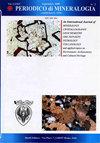基于GLCM和ElasticNet正则化的盲图像去模糊
IF 1.2
4区 地球科学
Q3 GEOCHEMISTRY & GEOPHYSICS
引用次数: 0
摘要
众所周知,数码相机性能下降的原因是相机抖动、光线暗淡和手持相机等。在过去的十年中,在从burry输入中检索潜在图像的领域进行了广泛的研究;他们中的大多数工作得很好,但往往招致模糊的边缘。本文提出了一种新的去模糊方法,该方法在亮度通道中利用二维Haar小波变换从模糊图像中提取高频层,经过精细的边缘检测处理后,利用GLCM和滑动窗口概念在高频层中提取丰富的边缘区域。最后,利用提取的丰富边缘区域,利用奇异值的弹性网正则化估计模糊核。这里使用正则化来避免数据的过拟合,并减少图像的模糊效果。实验结果表明,本文提出的去模糊算法对以PSNR和SSIM等参数评价的自然图像具有较好的去模糊效果。本文章由计算机程序翻译,如有差异,请以英文原文为准。
Blind Image Deblurring using GLCM and ElasticNet Regularization
The well-known source of digital degradation is camera shake, photos under dim light and a handheld camera etc. Extensive research has taken place over the last decade in the field of retrieving a latent image from burry input; most of them work quite well, but very often incur to blur in edges. This paper has been proposed a new deblurring method in which the high-frequency layer is extracted from the blurred image using a 2D Haar wavelet transform in the luminance channel, then from the high-frequency layer, rich edge region is extracted using GLCM and sliding window concepts after the canny edge detection process. Finally, the extracted rich edge region is used to estimate the blur kernel using the elastic net regularization of singular value. Here regularization is used to avoid over-fitting of the data and reduces the blurring effects of the image. Experimental result demonstrates that the proposed deblurring algorithm achieves the better results on natural images which are evaluated using the parameter such as PSNR and SSIM.
求助全文
通过发布文献求助,成功后即可免费获取论文全文。
去求助
来源期刊

Periodico Di Mineralogia
地学-地球化学与地球物理
CiteScore
1.50
自引率
14.30%
发文量
0
审稿时长
>12 weeks
期刊介绍:
Periodico di Mineralogia is an international peer-reviewed Open Access journal publishing Research Articles, Letters and Reviews in Mineralogy, Crystallography, Geochemistry, Ore Deposits, Petrology, Volcanology and applied topics on Environment, Archaeometry and Cultural Heritage. The journal aims at encouraging scientists to publish their experimental and theoretical results in as much detail as possible. Accordingly, there is no restriction on article length. Additional data may be hosted on the web sites as Supplementary Information. The journal does not have article submission and processing charges. Colour is free of charges both on line and printed and no Open Access fees are requested. Short publication time is assured.
Periodico di Mineralogia is property of Sapienza Università di Roma and is published, both online and printed, three times a year.
 求助内容:
求助内容: 应助结果提醒方式:
应助结果提醒方式:


